New design, familiar drive system: Dacia refreshes its Spring
Dacia is giving its electric car, launched in 2021, a makeover but is not revising its drive technology. That is the main message the Renault brand sent out at the presentation of the new generation. With its high utility value, the Spring already fulfils the “real needs” of customers. As a city car, the robust model can score points with its low weight and favourable price. Dacia likes to emphasise the price-performance ratio of the SUV-like EV. On the other hand, it is no secret that the Spring is neither particularly suitable for long motorway journeys nor capable of fast charging.
Dacia remains true to this positioning with the new generation. The revised Spring can be ordered from dealers in the spring, and the market launch will follow in the summer. Dacia has not yet announced the price of the future version, but at a pre-event for members of the press, it let slip that the Spring “will remain the cheapest EV in Europe.” However, we learned at the event that there could be a brief gap in supply. The current generation is sold at a discounted rate (at least in Germany), while the new generation won’t be available until the summer.
The future Spring draws inspiration from the new Duster, the first model to represent Dacia’s new design approach. On the outside, it can be seen in a more strongly shaped bonnet, coloured protective strips surrounding the bumpers and wheel arches in particular, and front lights in the form of a horizontal letter ‘y.’ In addition to the previous 14-inch wheels, 15-inch wheels are now available as an option, and the model will also be available in six colours (including the new Safari Beige and Brick Red colours). At the same time, the body will be three centimetres shorter (from 3.73 to 3.70 metres) thanks to the redesigned bumpers. The new Spring is 1.52 metres high and 1.77 metres wide (1.58 metres with the wing mirrors folded down). The wheelbase remains identical at 2.42 metres.
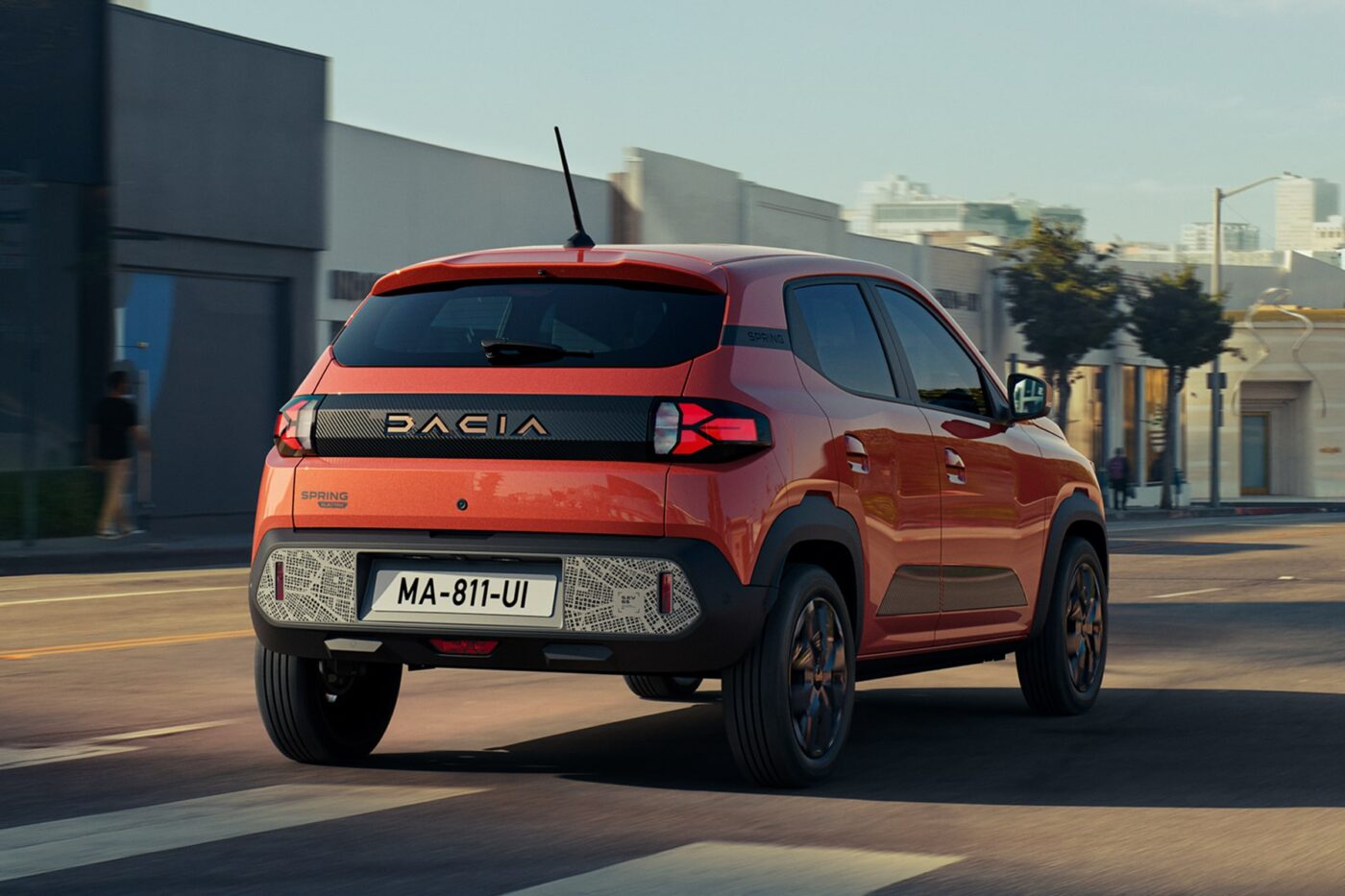
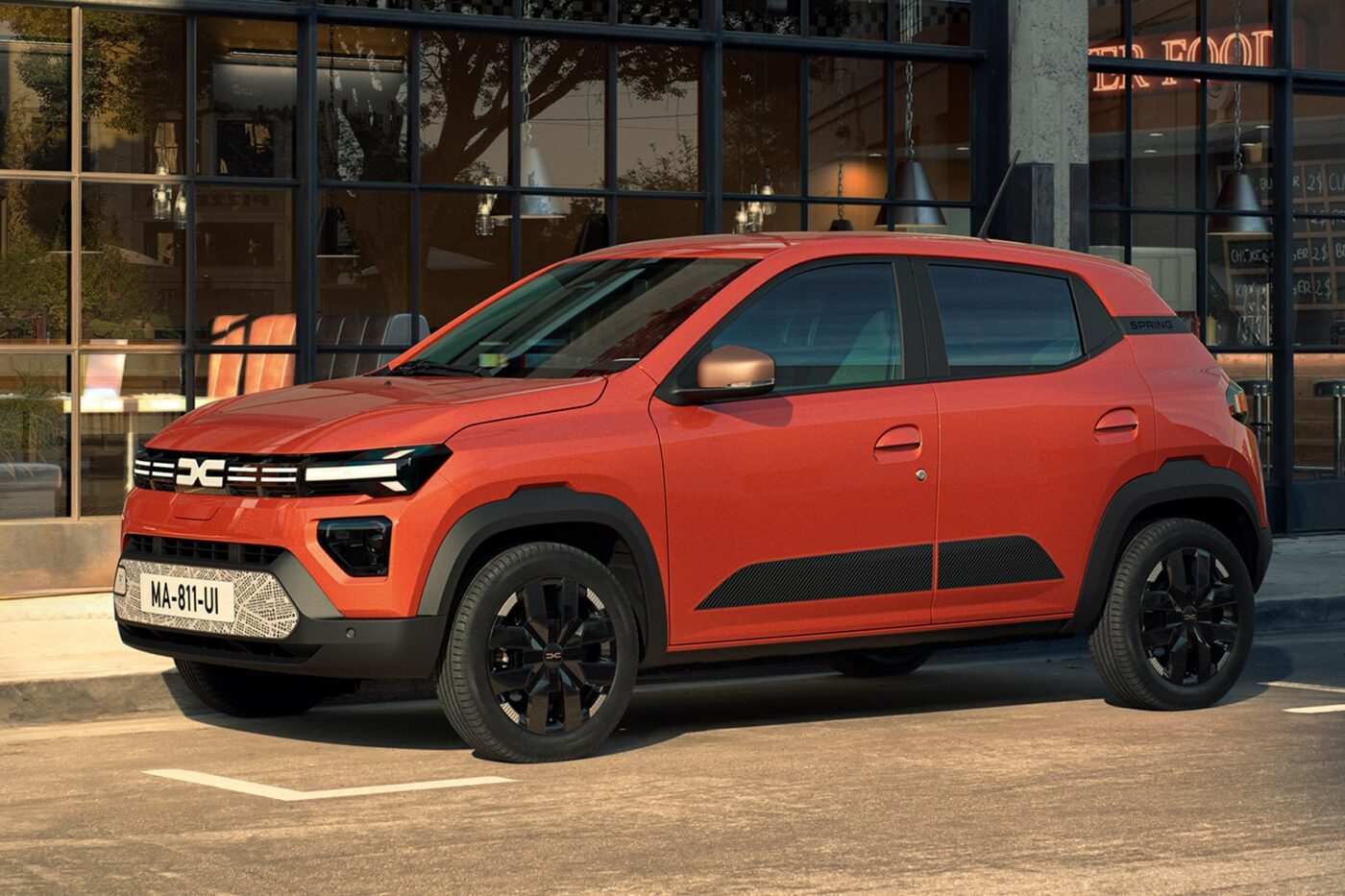
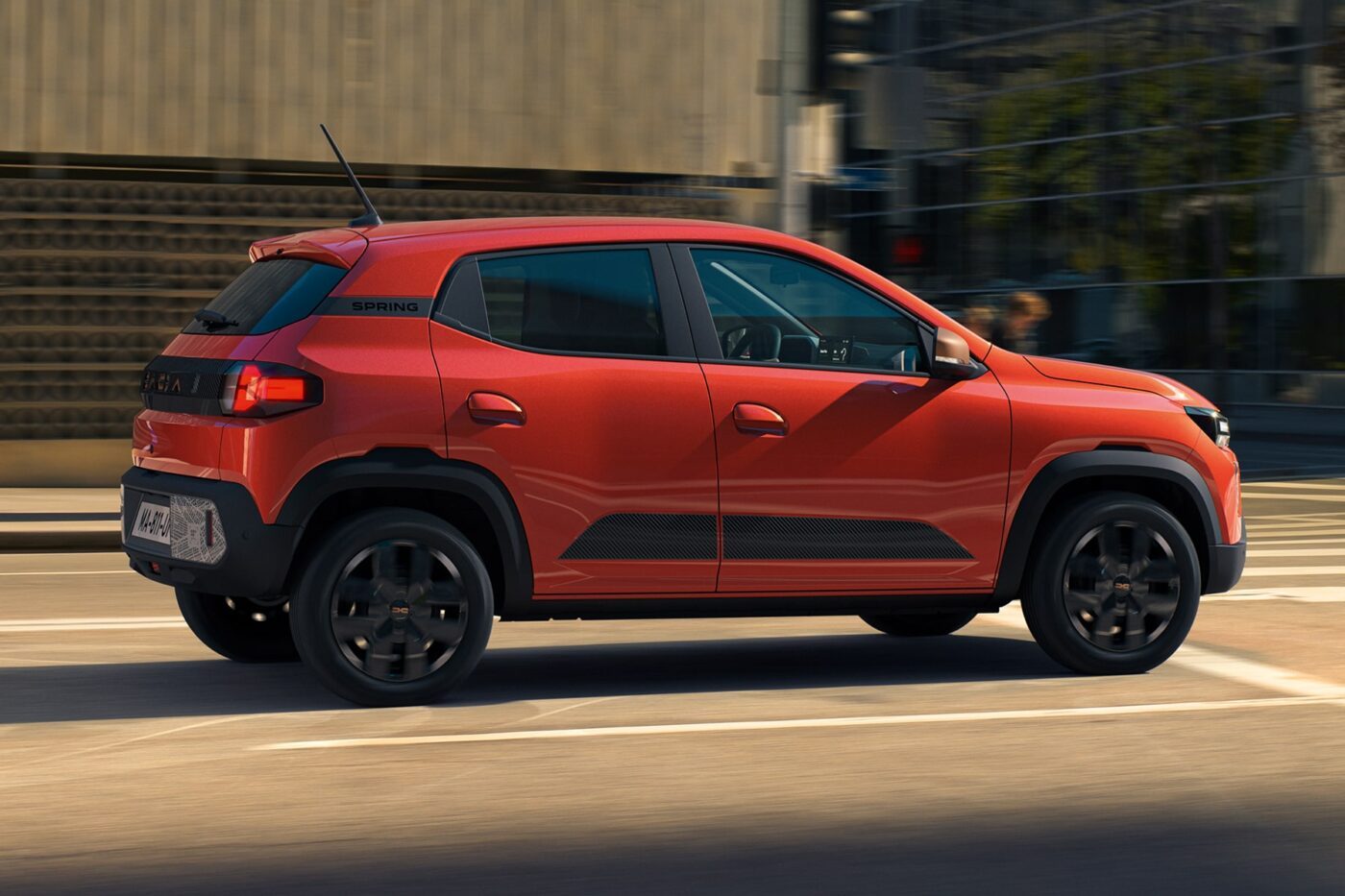
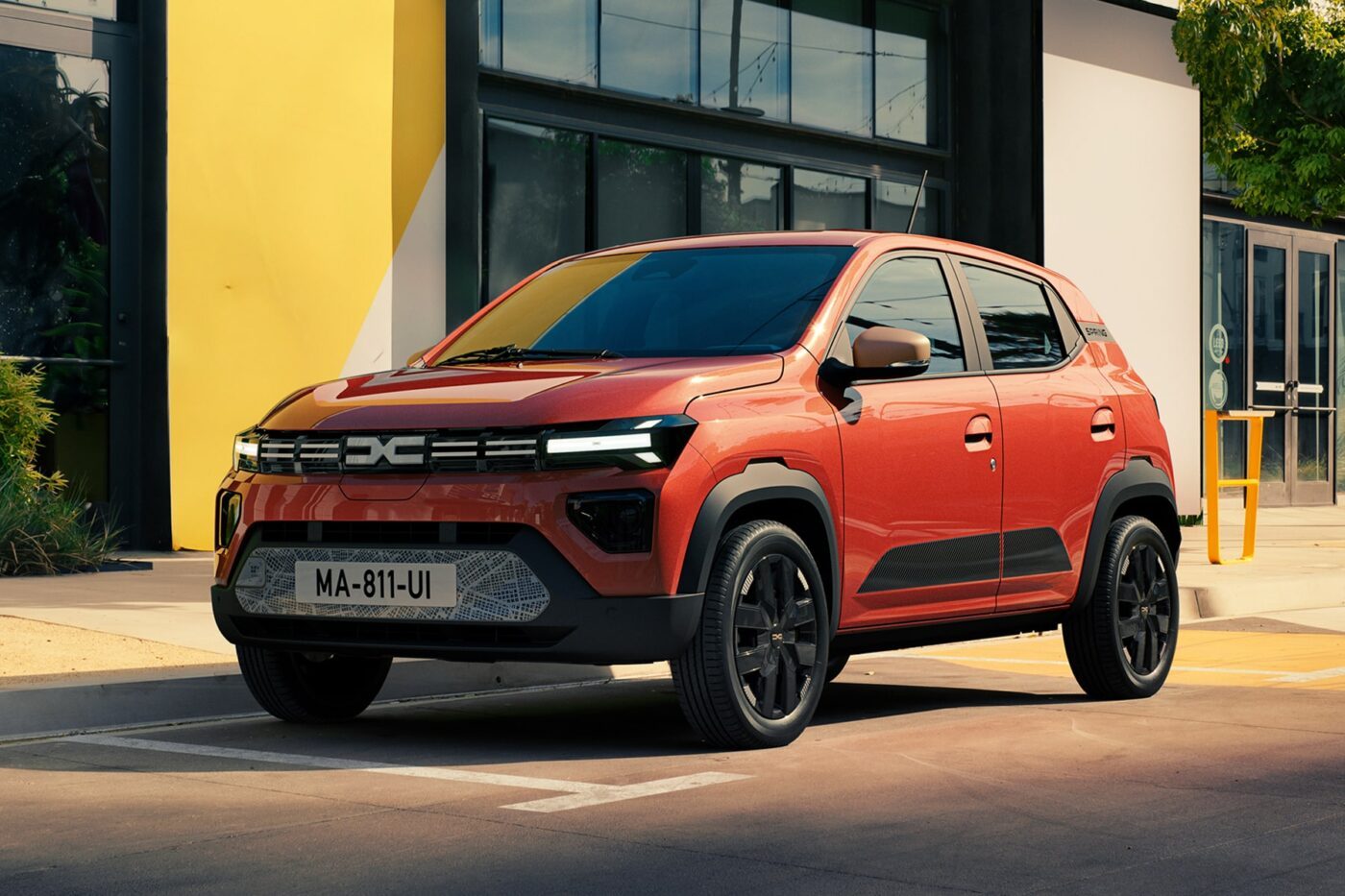
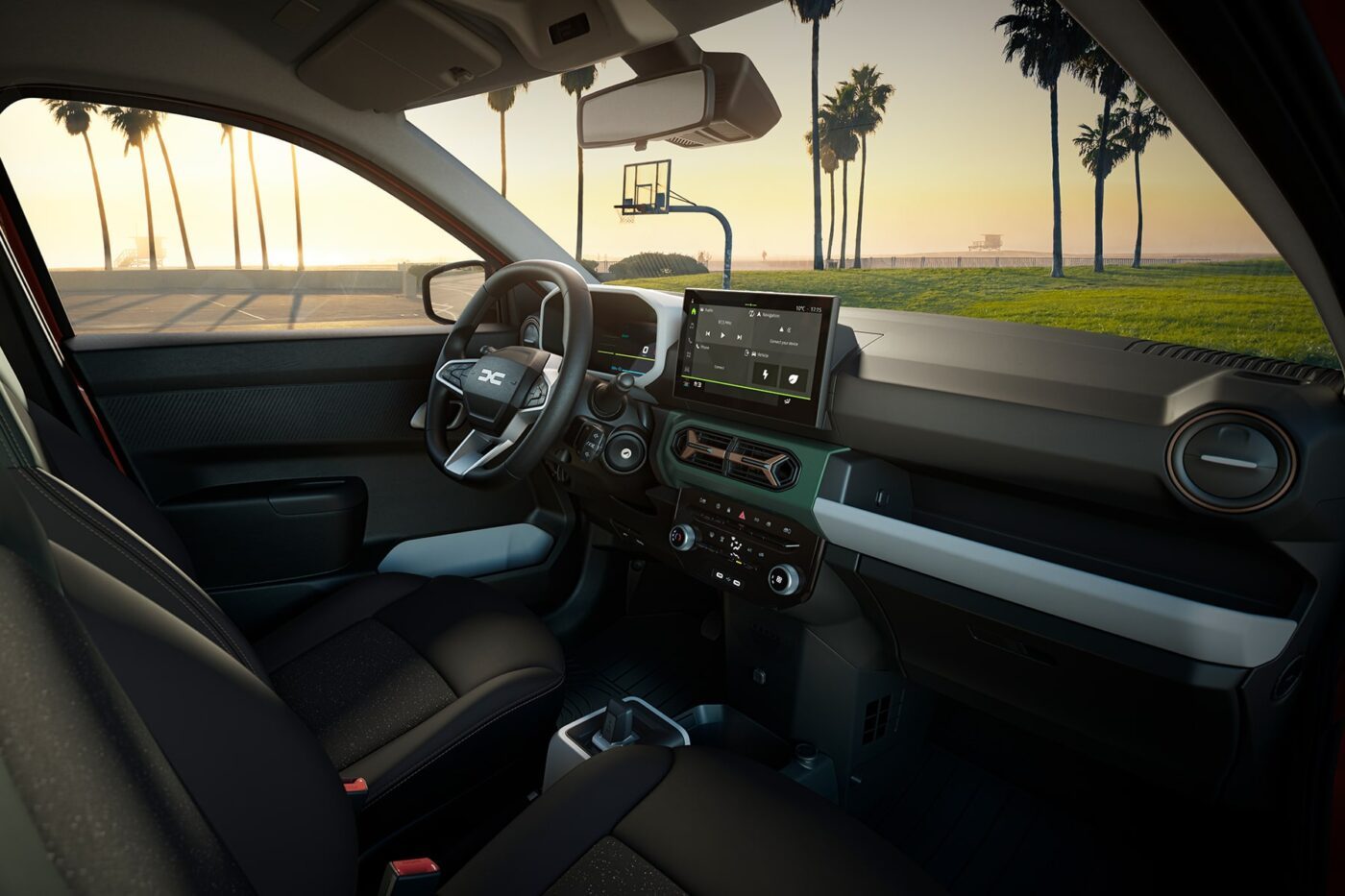
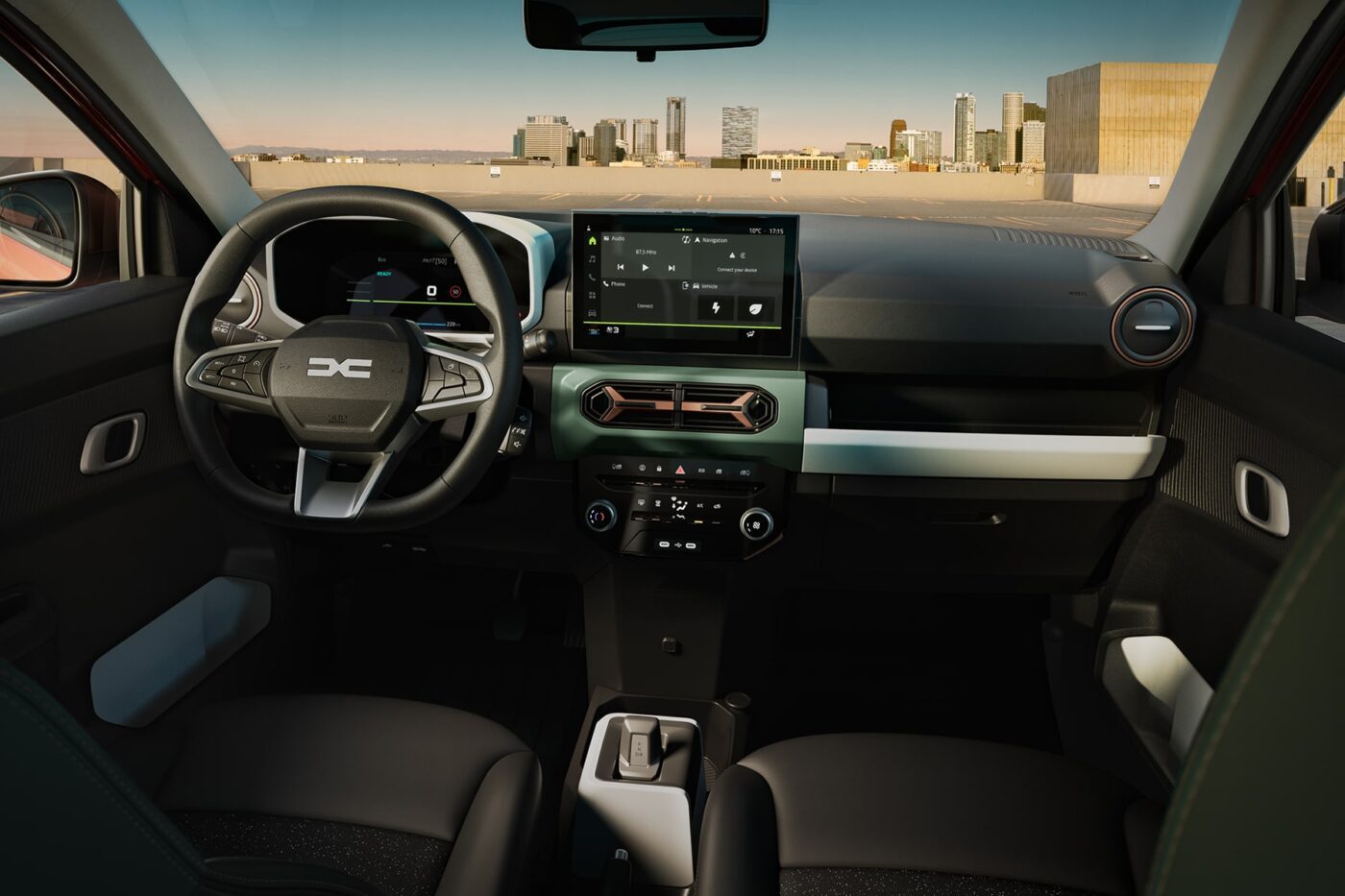
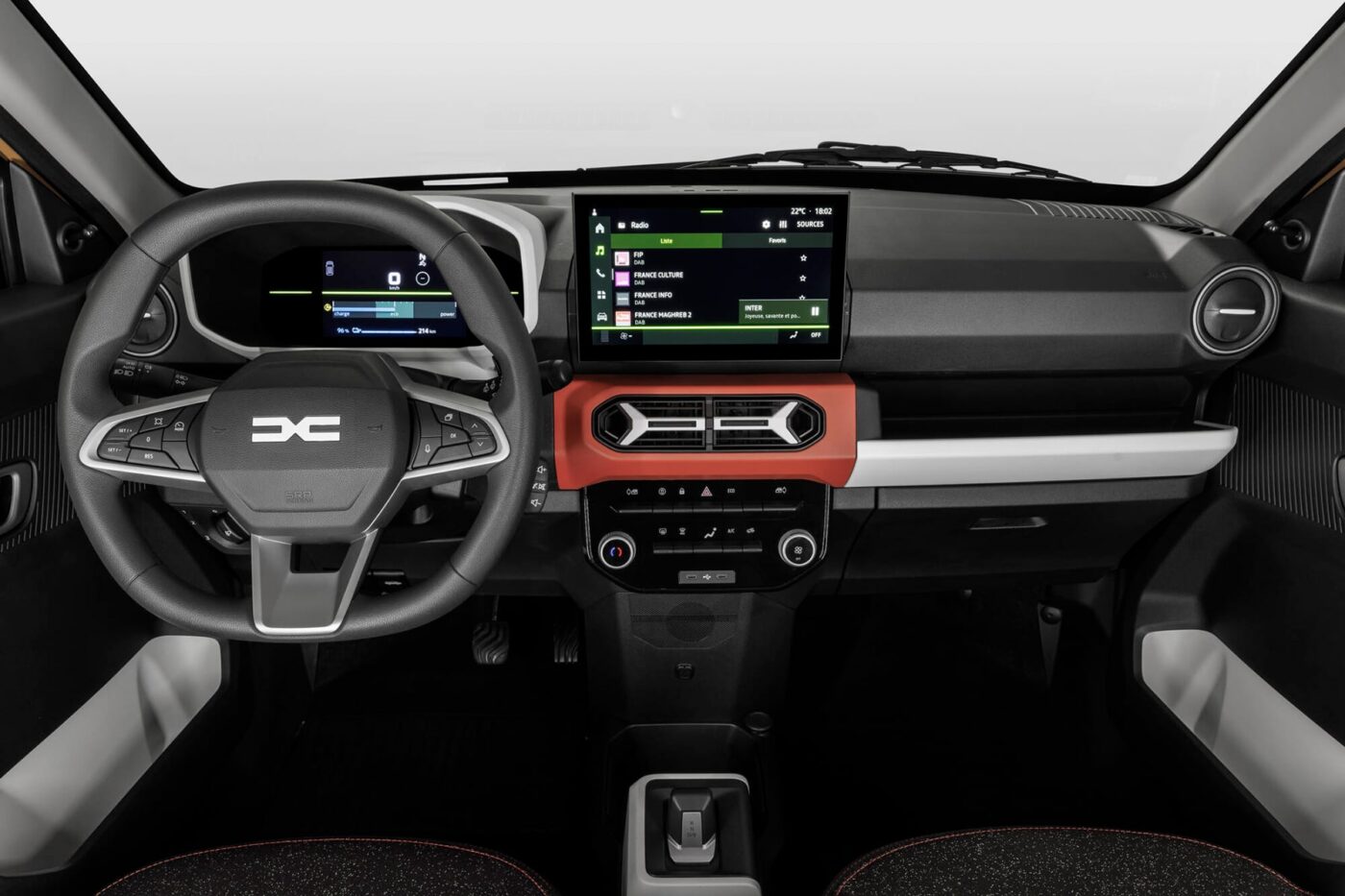
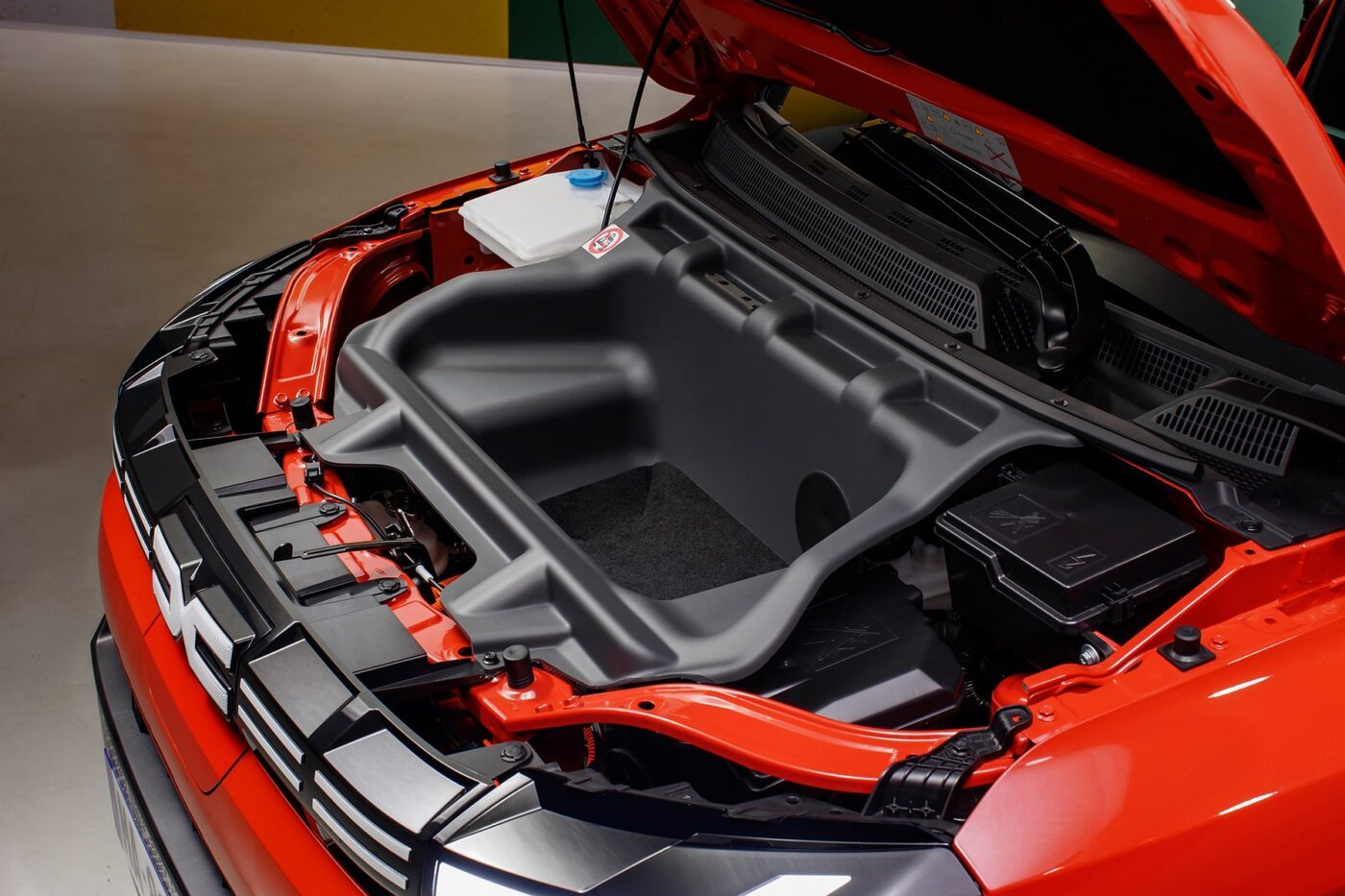
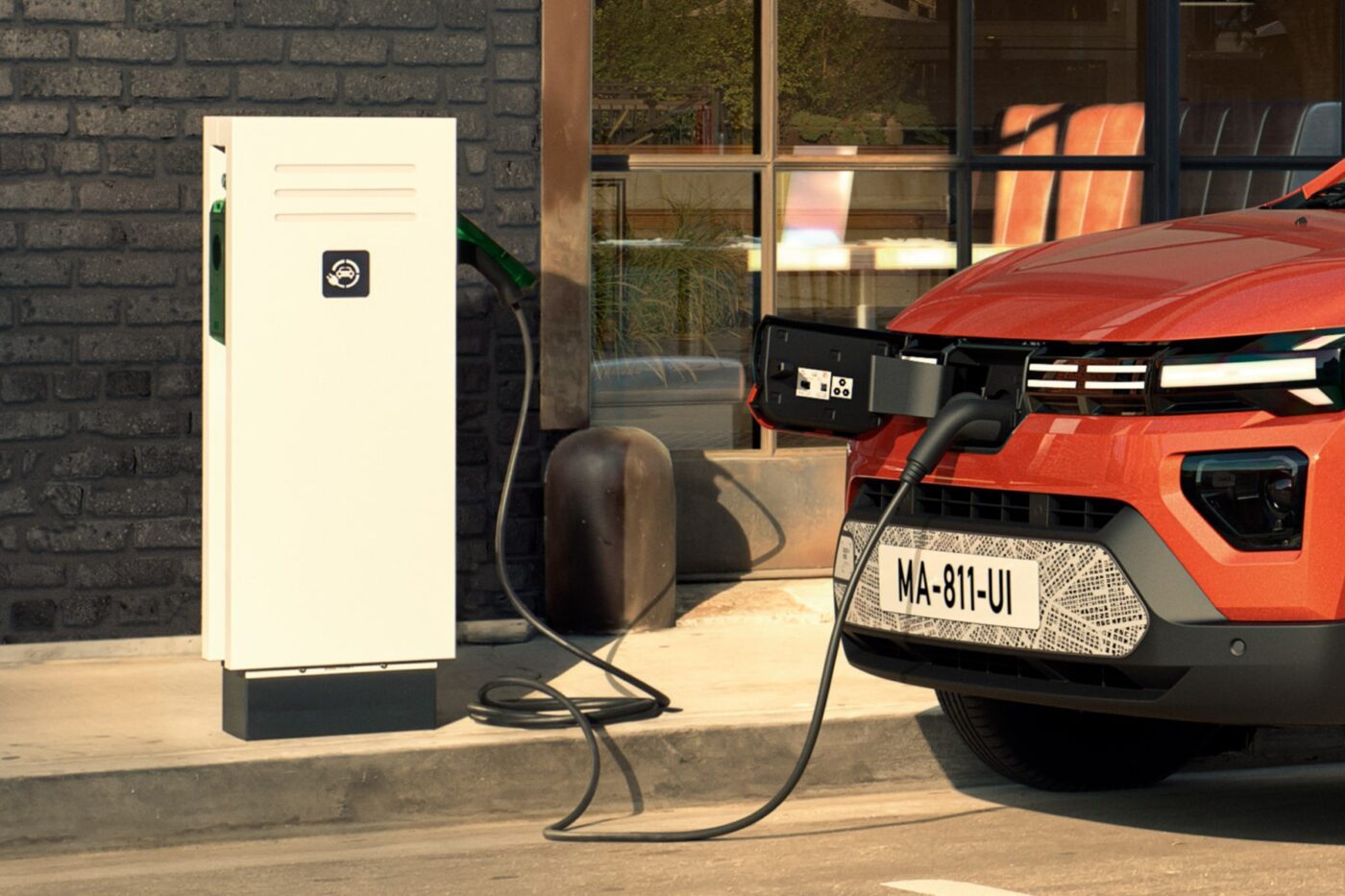
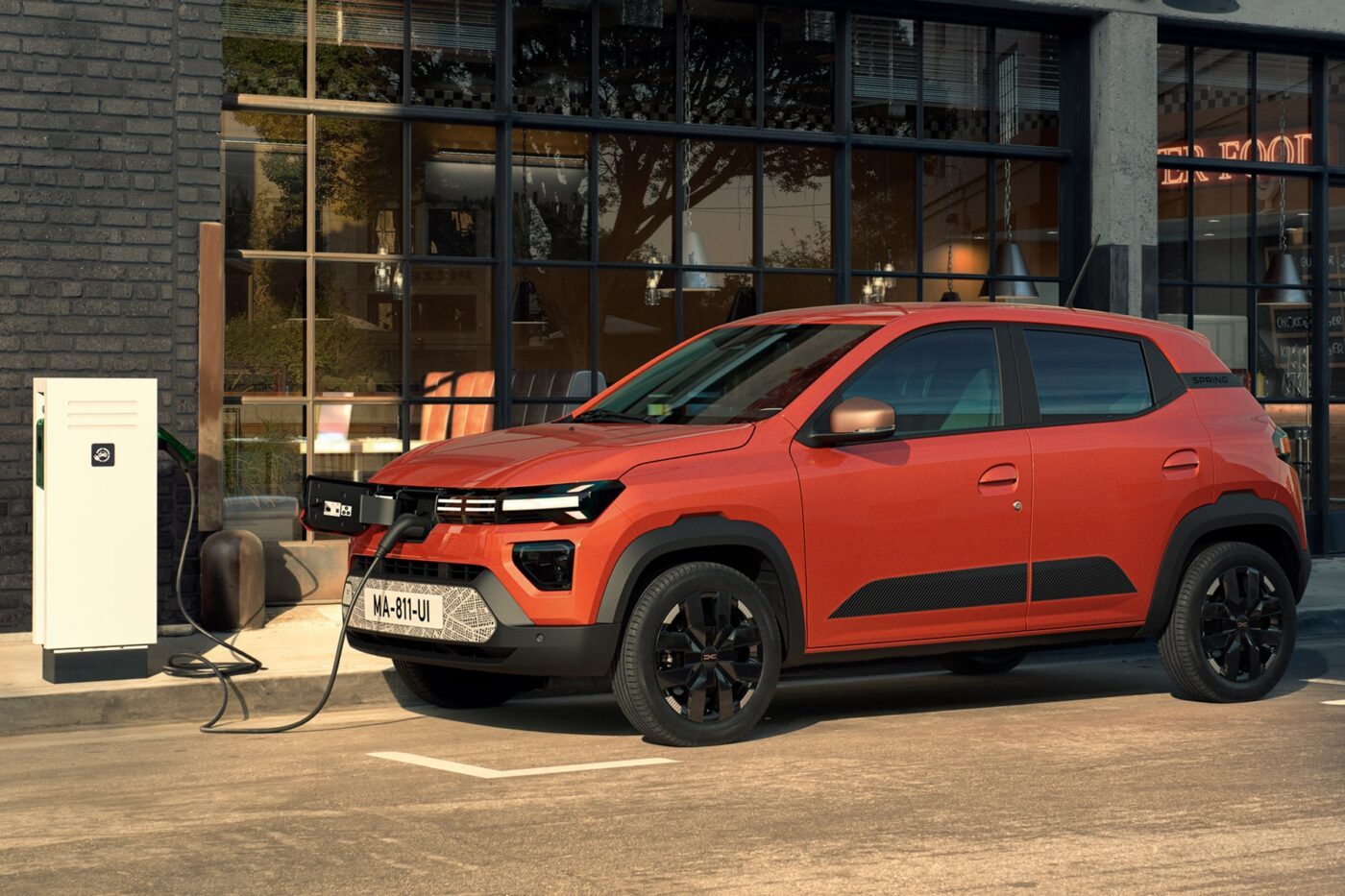
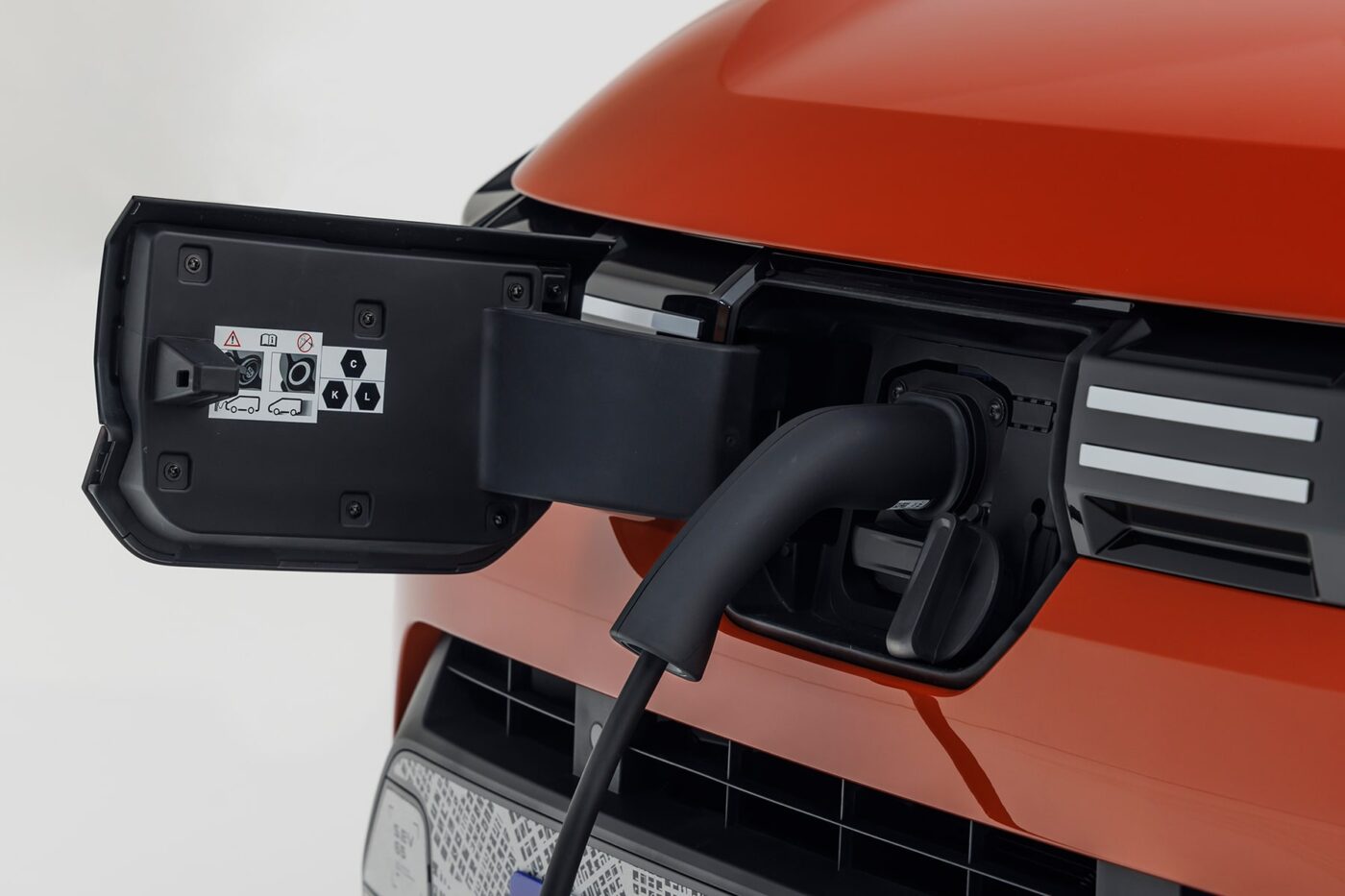
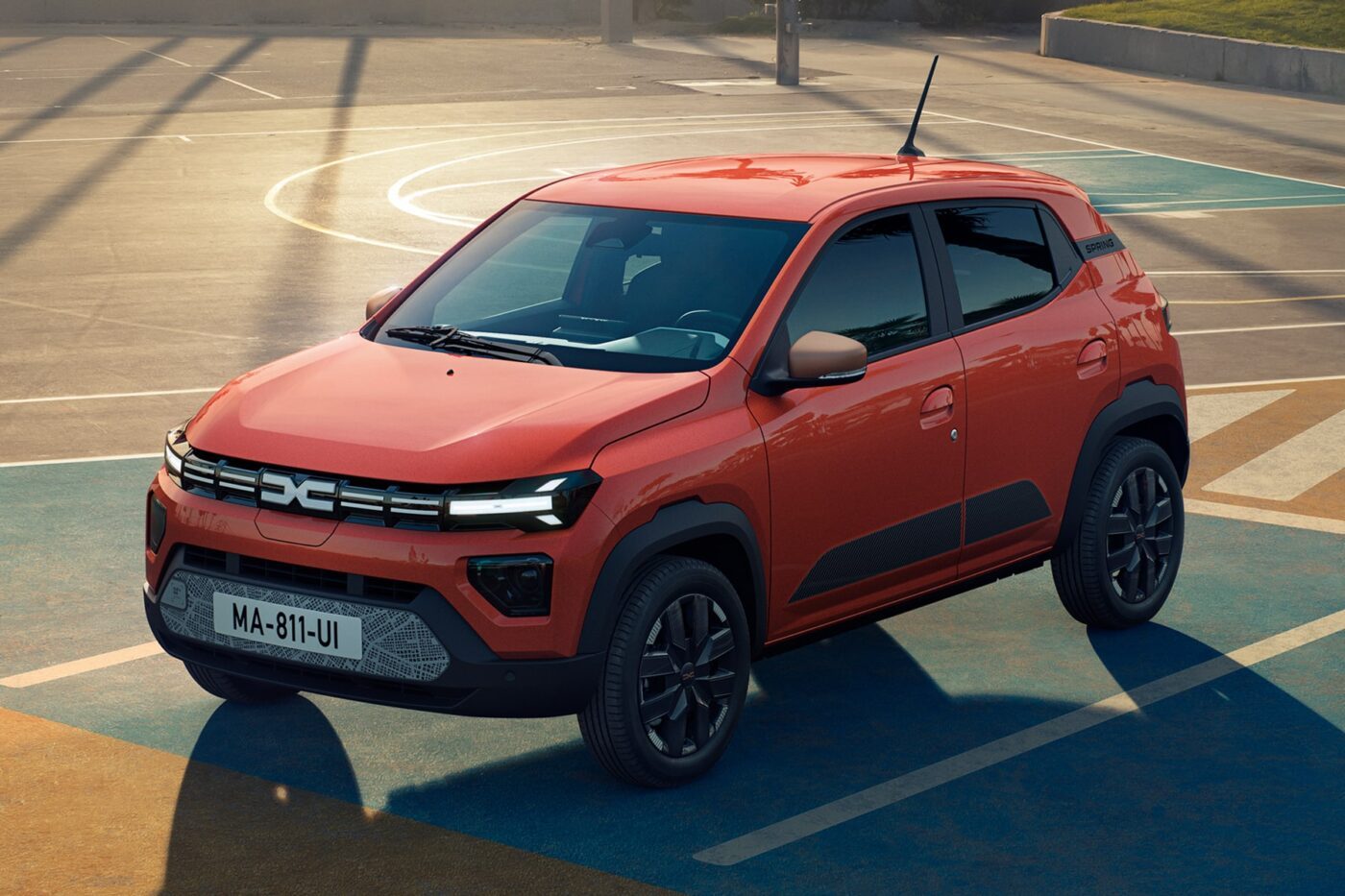
Continuity also applies to the drive system: the choice of 48 or 33 kW engines remains unchanged. Dacia has also kept the battery the same. At 26.8 kWh, it is still stowed in box form under the rear seat – a component that Dacia shares with the Renault K-ZE City, which is sold in China. The cells still come from the Chinese supplier Sunwoda.
However, Dacia is expanding the equipment options and, in line with other models in its range, is adding a mid-level equipment variant called “Expression” between the existing “Essential” and “Extreme” equipment lines. The basic version is only available with the small electric motor, and the top version only with the large one. Both powertrains are available in the mid-range “Expression” version. The range of all versions will be over 220 kilometres. It is a provisional figure, as homologation is still pending. The current generation Spring has a range of 230 kilometres according to WLTP and 305 kilometres in the city cycle.
When it comes to charging, everything remains the same. The EVl charges with 7 kW AC via the charging port at the front and can thus charge from 20 to 100 per cent in just under eleven hours at a household socket or in four hours at a wallbox. The DC charging function with 30 kW remains optional (from 20 to 80 per cent SoC in 45 minutes). Customers will still have to do without high-speed charging. However, the Spring is now Vehicle-to-Load (V2L) capable, thanks to an optional adapter. This accessory, subject to an additional charge, transforms the charging port into a conventional 220V/16A socket that can be used to operate external devices. Another new feature is a regenerative braking system, activated by selecting “B mode” via the new transmission control unit.
The electric Dacia continues to be a lightweight and, with an extra six kilos (984 kilograms), remains under the one-tonne limit. The previous payload of 330 kilos is likely to drop slightly in line with the single-digit kilo increase in weight. But here, too, homologation is still pending. At the same time, the boot volume increases from 290 to 308 litres (1,004 litres with the rear seats folded down). In addition, there are almost 33 litres of storage in the interior. Another new feature is an optional frunk under the front bonnet with 35 litres of storage space. Moreover, Dacia is promoting its “YouClip” system, which was introduced in the Duster and is now also available in the Spring, with which accessories such as smartphone holders, lamps or bags that can be ordered from dealers and clip onto various attachment points (in the Spring there is one on the dashboard and two on the centre console). In future, this function will be implemented in all new Dacias.
Speaking of the interior, all versions will have a 7-inch instrument cluster behind a newly height-adjustable steering wheel and (except in the basic version) a 10.1-inch central display – the layout is similar to that in the new Duster. Instead of the central display, the entry-level version of the Spring has a clamping mechanism that allows you to attach your smartphone horizontally and use it as a screen via Bluetooth and a special app. It is operated via the steering wheel. As far as the colour palette and materials for the interior are concerned, Dacia has opted for “higher quality” and, at the same time, “fewer options.” Plastic continues to dominate.
In addition to the 7-inch instrument cluster, a height-adjustable three-spoke steering wheel, power steering, a speed limiter, cruise control, radio controls on the steering wheel, central locking with remote control, electric front windows, rear parking radar and a 12-volt socket are always fitted ex works in the Spring. The “Expression” equipment line also includes manual air conditioning, 15-inch wheels (on the 48 kW engine), a rain sensor and automatic lights.
The “Extreme” version also offers electric exterior mirrors, electric windows at the rear, the Media Nav Live multimedia system with a 10.1-inch centre screen and wireless connectivity via Apple CarPlay or Android Auto. The Spring “Extreme” also features special stickers on the bumpers.
The Spring has already undergone several changes. In 2021, it was initially launched exclusively with 33 kW power. In 2022, it was given a slightly different look, and in 2023, the more powerful 48 kW drive was added as an option. There is also a cargo version, which is not available in Germany. The Spring has been produced at Dongfeng in Wuhan, China, since the beginning.
“The new Dacia Spring adopts the brand’s evolved design language and is a clear sign that it is and will remain an important member of the Dacia family,” says David Durand, Vice President Design at Dacia. “We have given it a serious and confident design. The new Spring builds on the success of the previous model and confidently asserts its own identity.”
Dacia emphasises that after its market launch in autumn 2021, the Spring was the third most-sold electric car to private individuals in Europe in 2022 and 2023. According to the manufacturer, a good 140,000 Dacia Springs have been sold since the market launch, including more than 31,000 units in Germany. According to internal company statistics, around 90 per cent of customers there opt for the higher trim levels (currently only “Essential” and “Extreme”). Dacia also published vehicle data collected, according to which Spring customers drive an average of 37 kilometres a day at an average speed of 37 kph. Ninety per cent of all journeys are shorter than 70 kilometres, and 75 per cent of the Dacia Spring is charged at home. Dacia also uses this data to support its argument that there is no need to update the current drive system from the customer’s point of view.
Update 13 March 2024
Dacia has revealed UK prices and opened the pre-order books for the electric Spring. The new Dacia Spring will launch with a price starting at £14,995 on-the-road, making it the UK’s most affordable new electric car by a margin of thousands of pounds. The new Dacia Spring will arrive in the UK in October.
“Spring has played a key part in widespread adoption of EVs across Europe and, with a price that is even lower than speculated, we’re confident it will continue the success story in the UK,” said Luke Broad, Dacia Brand Director for the UK, adding: “We have listened to the concerns of UK drivers regarding accessing EVs, ensuring it not only has an unprecedented price but affordability that doesn’t come at the expense of durability, equipment or usability.”
Update 29 May 2024
Dacia is officially opening the UK order books for the new Dacia Spring on Tuesday 4 June. That is the same day that the battery-electric ‘supermini’ will make its UK debut at a special launch event for Dacia’s new London West flagship retailer.
As mentioned above, the new Spring will start at £14,995 in the UK, features a range of up to 137 miles (WLTP mixed cycle) or 186 miles (WLTP urban cycle) and can be charged from 20% to 100% in four hours on a 7kW charger.
Luke Broad, Dacia Brand Director for the UK, explained: “Combining the official opening of Spring orders with our flagship retailer on 4 June reaffirms Dacia’s commitment to the UK.”
dacia.de, Translation by Carla Westerheide, dacia.co.uk, dacia.co.uk (both update), dacia.co.uk (update II)

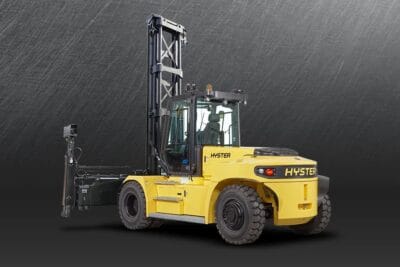
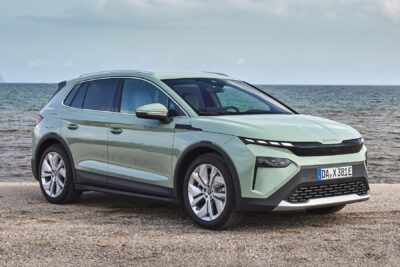
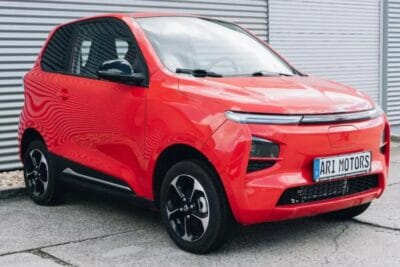
0 Comments